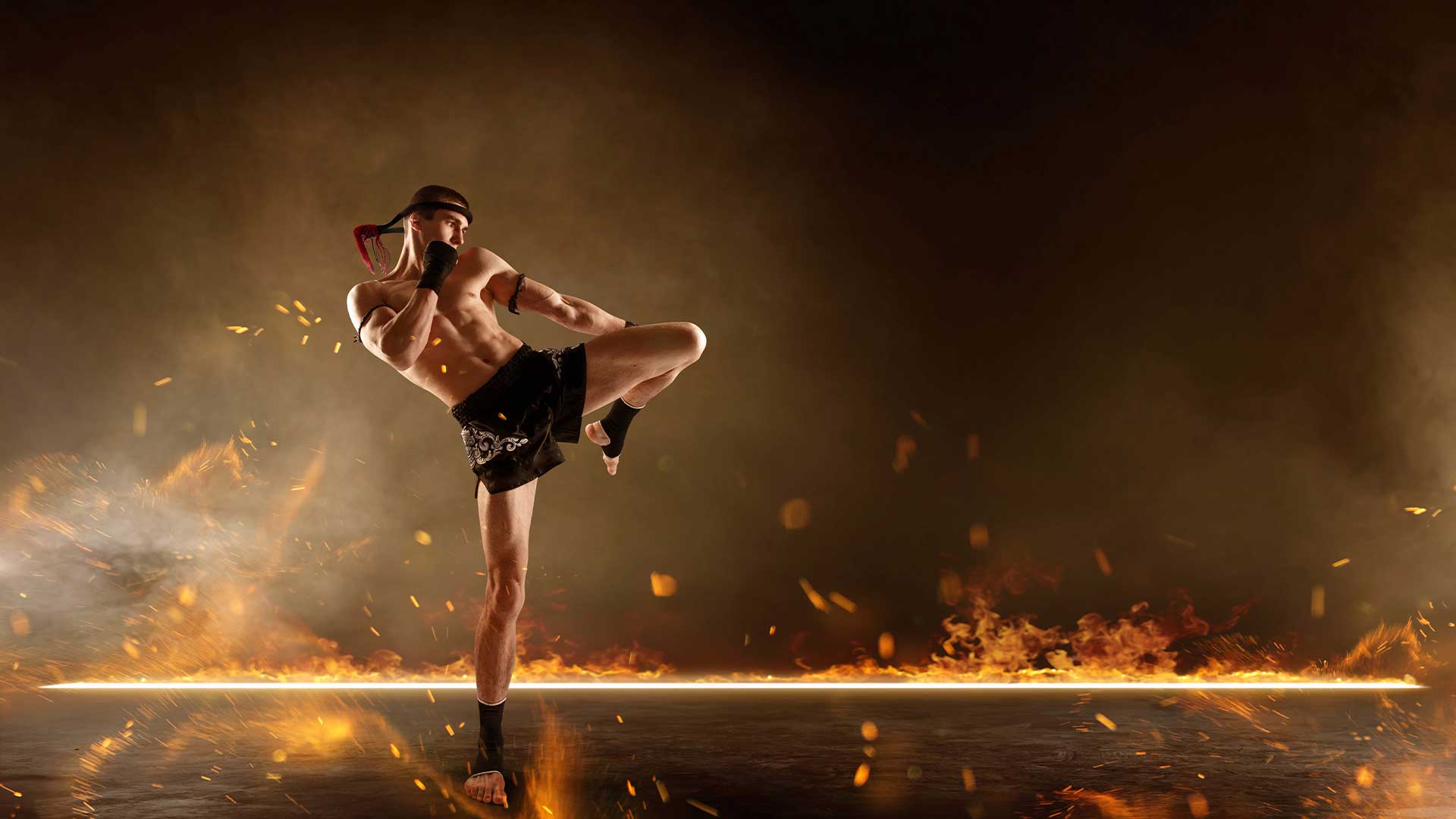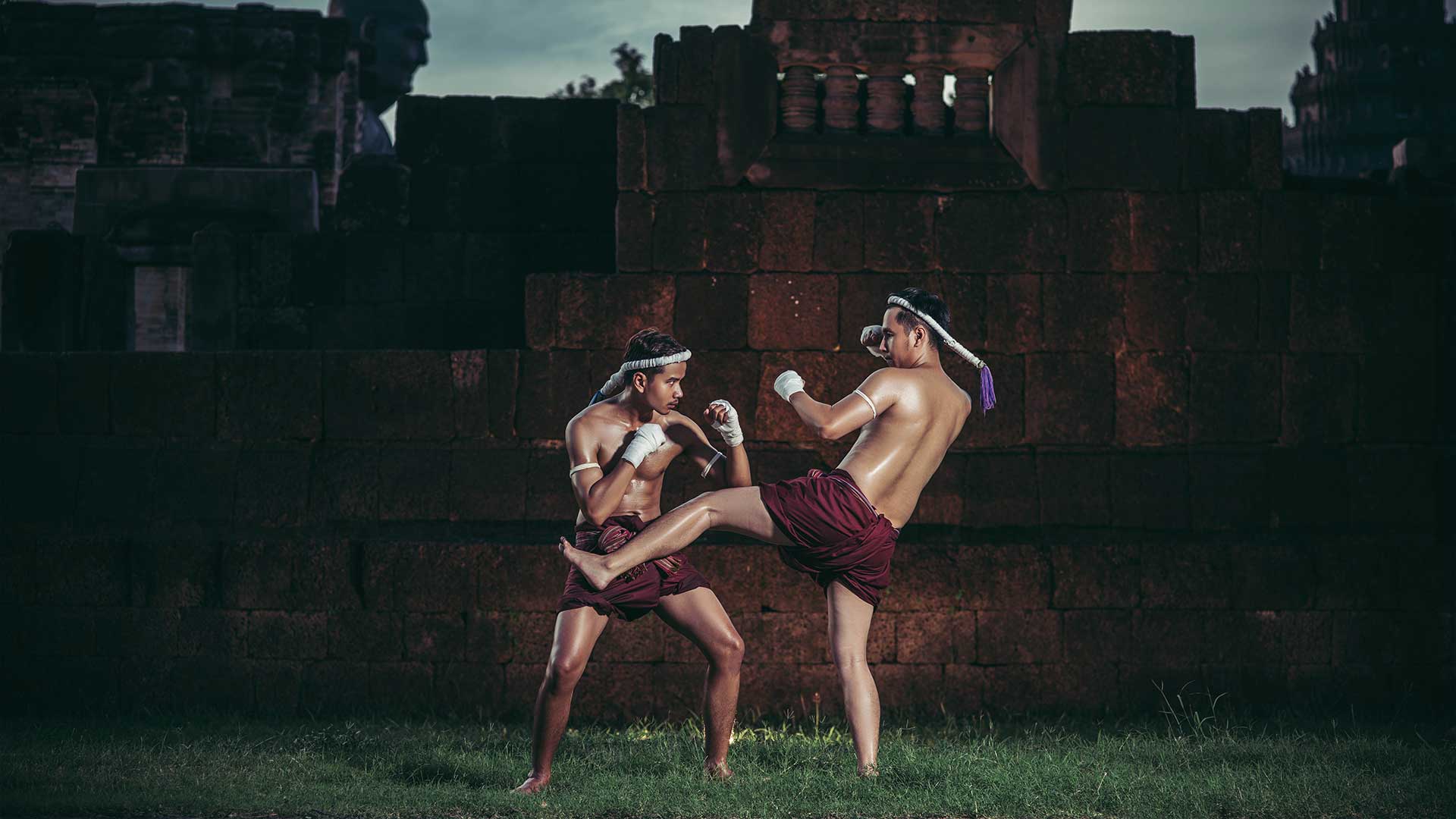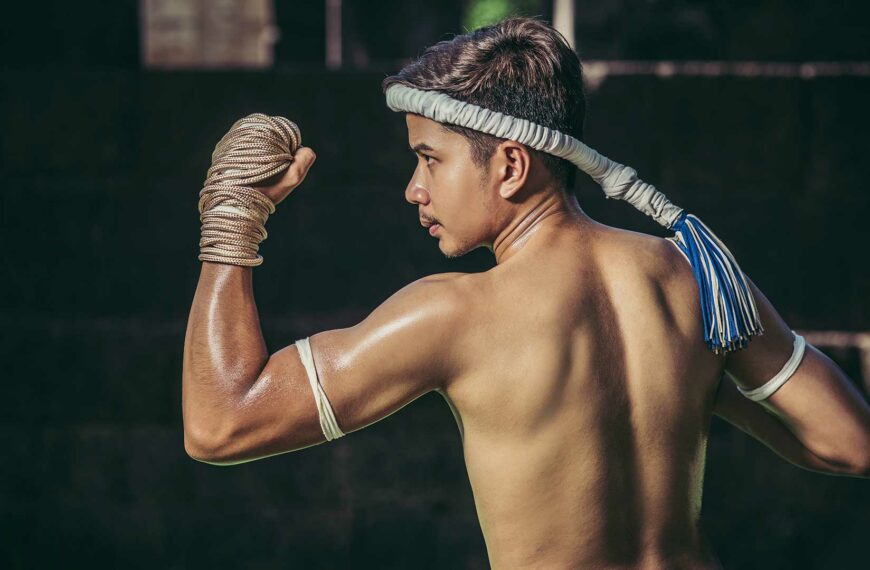What You Will Learn About Muay Thai
- The origins and history of Muay Thai, tracing it back to Muay Boran.
- The meaning and philosophy of Muay Thai, including its translation and underlying principles.
- The techniques and style of Muay Thai, such as the “Art of eight limbs” concept and defensive techniques.
- The benefits of practicing Muay Thai, both physical and mental.
- Training and conditioning techniques for Muay Thai practitioners.
- The Muay Thai stance and proper positioning for offense and defense.
- The culture and traditions of Muay Thai, including pre-fight ceremonies and its role in Thai society.
- The rules and regulations of Muay Thai competitions and its inclusion in MMA.
- The popularity of Muay Thai in MMA and its effectiveness in stand-up striking.
- The limitations of Muay Thai in ground fighting.
- Encouragement to explore and experience the rich tradition and techniques of Muay Thai.
Origins and History of Muay Thai
Muay Thai, also known as Thai boxing, is a martial art and combat sport originating from Thailand. It is characterized by the use of fists, elbows, knees, and shins, earning it the nickname “Art of eight limbs.” Muay Thai has gained international popularity and is recognized by various sports organizations worldwide. In this article, we will explore the origins, meaning, techniques, benefits, training, culture, and rules of Muay Thai. Whether you are a beginner or a seasoned practitioner, this comprehensive guide will provide you with insights into the rich tradition and techniques of Muay Thai.
Meaning and Philosophy of Muay Thai
The term “Muay Thai” translates to mean “boxing” in Thai. The word “Muay” refers to the art of boxing, while “Thai” denotes its origin in Thailand. The name itself reflects the focus of this martial art on striking techniques and its cultural significance in Thai society.
Beyond its translation, Muay Thai embodies a set of philosophical principles and values. It emphasizes respect, discipline, and humility. Practitioners are encouraged to cultivate mental strength, perseverance, and self-control. Muay Thai training goes beyond physical conditioning and becomes a holistic experience that nurtures the mind, body, and spirit.
Techniques and Style of Muay Thai
Muay Thai is renowned for its “Art of eight limbs” concept, which incorporates punches, kicks, knees, and elbows. This unique style of fighting allows practitioners to utilize various parts of their body as weapons, making it a versatile and effective combat system.
In Muay Thai, striking techniques are diverse and powerful. Punches are delivered with precision and speed, while kicks involve the use of the shin bone to generate maximum impact. Knees and elbows are devastating close-range weapons that can cause significant damage to opponents. Additionally, clinching techniques are employed to control and immobilize opponents, providing opportunities for devastating strikes.
Defensive techniques, footwork, and effective combinations are also crucial aspects of Muay Thai. Practitioners learn to evade and block incoming strikes while maintaining balance and control. Footwork plays a vital role in creating angles and setting up attacks. Combining different techniques in fluid sequences enhances the effectiveness of strikes and keeps opponents off balance.
Benefits of Practicing Muay Thai
Practicing Muay Thai offers a wide range of physical and mental benefits. From a physical standpoint, it is an excellent cardiovascular workout that improves endurance, strength, and flexibility. The high-intensity nature of Muay Thai training helps burn calories and build lean muscle mass. It is a dynamic and engaging form of exercise that keeps practitioners motivated and engaged.
On a mental level, Muay Thai instills discipline, self-confidence, and mental toughness. The training requires focus, concentration, and the ability to overcome challenges. Practitioners learn to push past their limits and develop a strong sense of self-belief. Muay Thai also serves as a stress-relieving activity, allowing individuals to release tension and improve their overall well-being.
Training and Conditioning
Proper training techniques and conditioning are essential for Muay Thai practitioners to develop their skills effectively. Training typically involves a combination of pad work, bag work, and sparring. Pad work allows practitioners to practice and refine their striking techniques, while bag work helps build strength and power.
Conditioning exercises are a crucial aspect of Muay Thai training. Endurance training, such as running and skipping rope, improves cardiovascular health and stamina. Strength and resistance training help develop the muscles required for powerful strikes and clinching. Flexibility exercises, such as stretching and yoga, enhance agility and reduce the risk of injuries.
To excel in Muay Thai, practitioners must focus on developing speed, power, and accuracy in their strikes. Regular practice, combined with proper technique and conditioning, allows individuals to refine their skills and become proficient in the art of Muay Thai.
The Muay Thai Stance
The Muay Thai stance is a fundamental aspect of the martial art. It provides a solid foundation for offense and defense while maintaining balance and mobility. There are two main stances in Muay Thai: orthodox and southpaw.
In the orthodox stance, the left foot is positioned slightly forward, with the right foot behind and at an angle. The weight is distributed evenly between both legs, allowing for quick movement and the ability to generate power in strikes. The hands are held high, protecting the face, while the chin is tucked to provide maximum protection.
The southpaw stance is essentially the mirror image of the orthodox stance. In this stance, the right foot is positioned slightly forward, with the left foot behind and at an angle. The weight distribution and hand positioning are similar to the orthodox stance, with the chin tucked for protection.
Proper arm, elbow, hand, and head positioning are crucial in maintaining an effective Muay Thai stance. The arms are used for both offense and defense, while the elbows are employed for close-range strikes. Hand positioning allows for quick and powerful punches, and proper head positioning ensures optimal defense against incoming attacks.
Muay Thai Culture and Traditions
Muay Thai has a rich cultural heritage and is deeply ingrained in Thai society. It is not only a sport but also a representation of Thai traditions and values. Before each fight, there is a pre-fight ceremony known as “Wai Kru Ram Muay.” This ritual pays respect to the fighter’s teacher, family, and ancestors. The fighters perform a series of movements and gestures accompanied by traditional music.
Traditional attire is an integral part of Muay Thai. Fighters wear a specific outfit known as “Sarama” during competitions. It consists of a Mongkon (headband), Pra Jiad (armbands), and Pra Mongkol (chest protector). These accessories hold symbolic meaning and are believed to bring protection and good luck to the fighters.
Muay Thai has gained international recognition and is represented in various competitions across the globe. It is a popular combat sport in mixed martial arts (MMA) due to its effectiveness in stand-up striking. However, there are concerns regarding child boxing, injuries, and gambling in the professional Muay Thai scene, which need to be addressed for the sport’s ethical development.
Personal Story: The Life-Changing Journey of Jane
Jane had always been fascinated by martial arts, but it wasn’t until she discovered Muay Thai that her life truly changed. At the age of 30, she found herself feeling stagnant and lacking confidence. That’s when she stumbled upon a local Muay Thai gym and decided to give it a try.
The first few weeks were challenging for Jane. She struggled to keep up with the intense training sessions, constantly feeling out of breath and sore. However, she was determined to push through and improve herself. With the guidance of her experienced trainers, Jane slowly started to build her strength, endurance, and flexibility.
As Jane continued to train, she noticed a significant shift in her mental state. Muay Thai became a form of therapy for her, allowing her to release stress and frustrations. The focused training required her to be fully present in the moment, which helped her develop discipline and focus in other areas of her life as well.
Not only did Jane’s physical fitness improve, but her self-confidence soared. Through the challenging sparring sessions, she learned to trust her instincts and believe in her abilities. Muay Thai became a platform for her to challenge herself and break through self-imposed limitations.
Outside of the gym, Jane embraced the cultural aspects of Muay Thai. She attended local fights and immersed herself in the traditions and ceremonies. The sense of community she found within the Muay Thai world was unlike anything she had experienced before.
Today, Jane continues to train in Muay Thai, even competing in amateur fights. Her journey with the martial art has transformed her life in ways she never thought possible. Muay Thai has not only given her physical strength and self-defense skills, but it has also empowered her to become the best version of herself both mentally and emotionally. Through Muay Thai, Jane has found her passion and purpose in life, forever grateful for the lessons it has taught her.
Muay Thai Competitions and Rules
Muay Thai competitions have specific rules and regulations to ensure the safety and fair play of the fighters. Unlike traditional boxing, Muay Thai allows the use of fists, elbows, knees, and shins. Fighters engage in full-contact striking and clinching techniques, making it a dynamic and exciting sport to watch.
Muay Thai differs from MMA in that it does not include ground fighting or grappling. The focus is primarily on stand-up striking and clinching. However, Muay Thai techniques and strategies have proven to be highly effective in MMA, and many MMA fighters incorporate them into their fighting style.
Over the years, Muay Thai has made significant progress towards potential inclusion in the Olympics. The sport’s global popularity and cultural significance have garnered attention from international sports organizations. The inclusion of Muay Thai in the Olympics would further elevate its status and provide a platform for athletes to showcase their skills on a global stage.
| Muay Thai Competitions and Rules | Muay Thai in MMA |
|---|---|
| Full-contact striking and clinching techniques | Effective in stand-up striking |
| Allows the use of fists, elbows, knees, and shins | Advantage in the striking aspect of MMA fights |
| Does not include ground fighting or grappling | Limitations in ground fighting |
| Focuses on stand-up striking and clinching | Widely regarded as one of the most effective striking arts in MMA |
| Potential inclusion in the Olympics | Utilized by many successful MMA fighters |
Muay Thai in MMA
Muay Thai has gained immense popularity among MMA fighters due to its effectiveness in stand-up striking. The diverse range of striking techniques and clinching strategies gives Muay Thai practitioners a significant advantage in the striking aspect of MMA fights.
The devastating power of Muay Thai strikes, combined with the ability to control opponents in the clinch, has proven to be a winning combination in MMA. Many successful MMA fighters have a background in Muay Thai and utilize its techniques to great effect in the octagon.
While Muay Thai excels in stand-up striking, it does have limitations when it comes to ground fighting. MMA fighters with a solid grappling and wrestling background can exploit these limitations by taking the fight to the ground. Nevertheless, Muay Thai remains an essential component of an MMA fighter’s skill set and is widely regarded as one of the most effective striking arts in the sport.
Conclusion
Muay Thai, or Thai boxing, is a martial art and combat sport with a rich history, deep cultural significance, and a wide range of techniques. It offers numerous physical and mental benefits, making it an attractive option for individuals looking to improve their fitness and learn self-defense skills. The philosophy of Muay Thai extends beyond the physical aspects and emphasizes discipline, respect, and mental toughness.
Whether you are a beginner or an experienced practitioner, Muay Thai provides a comprehensive and engaging training experience. By exploring the origins, meaning, techniques, and benefits of Muay Thai, you can gain a deeper understanding of this martial art and its place in both Thai society and the world of combat sports. So, embrace the art of eight limbs, step into the ring, and unlock the transformative power of Muay Thai.
References: – YOKKAO – What is Muay Thai? – Wikipedia – Muay Thai










![[aggregator] downloaded image for imported item #10307](https://muaythai.today/wp-content/uploads/2025/12/8b_f_11boTZcIkqnuQ23ANESaiMOud6xBdgfn7xVckA.jpg)